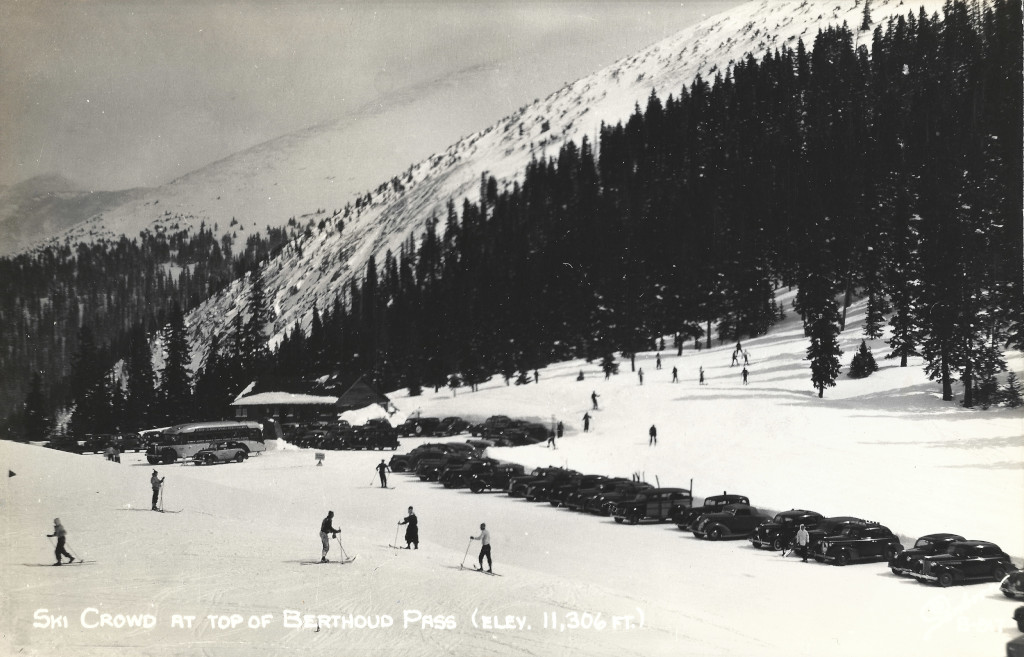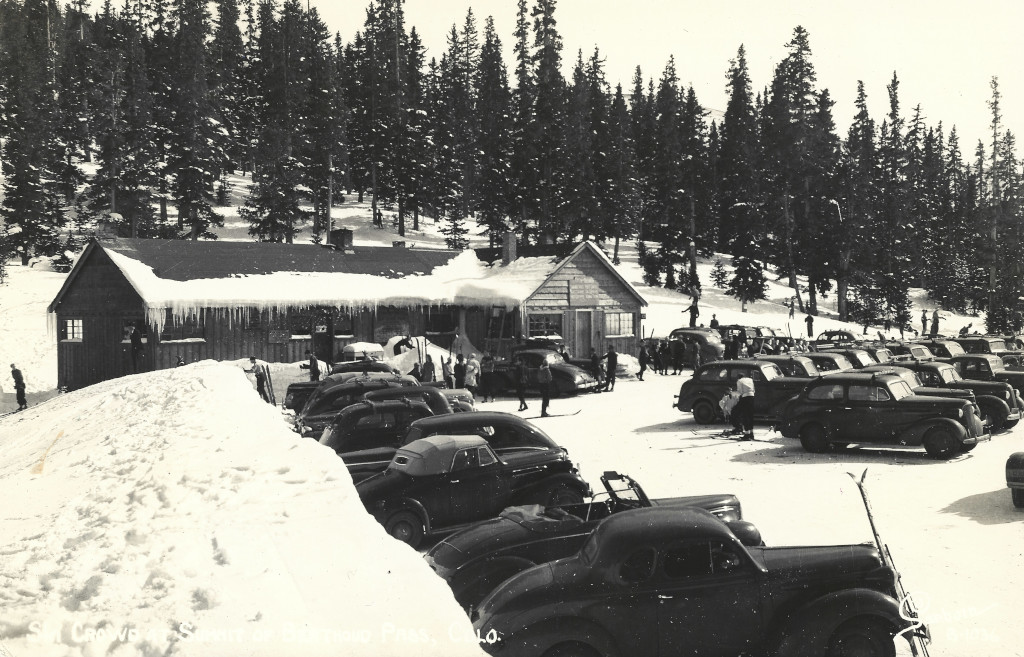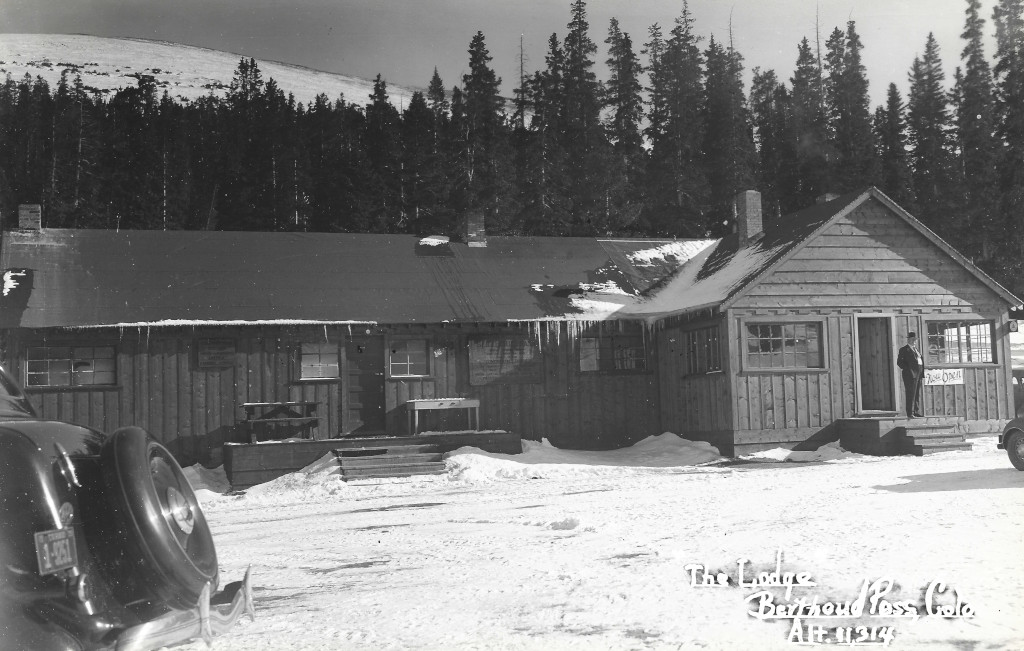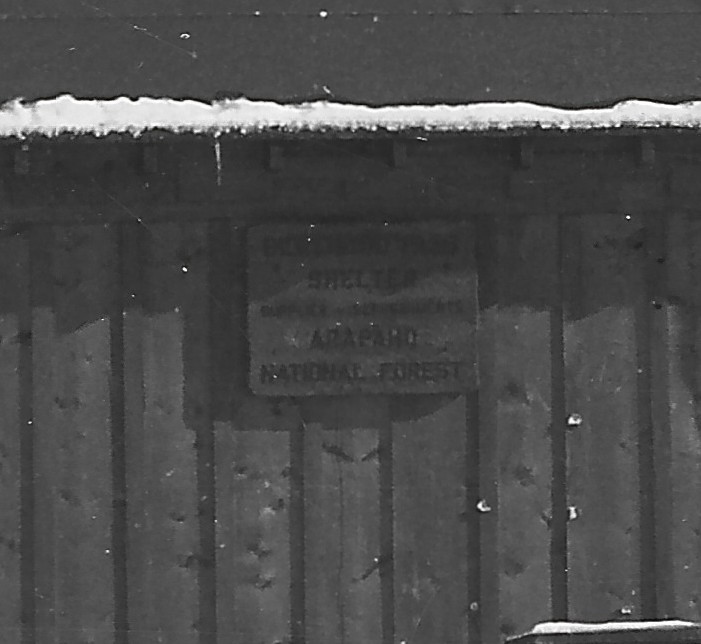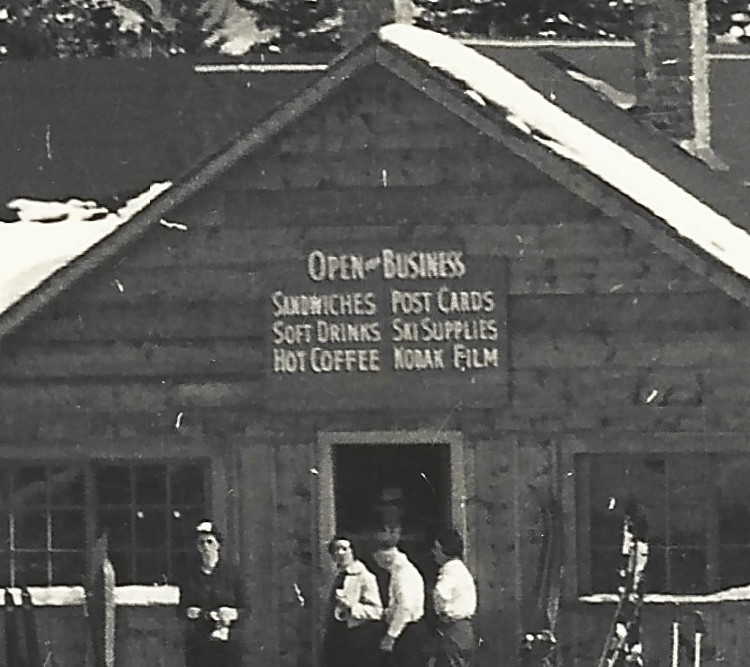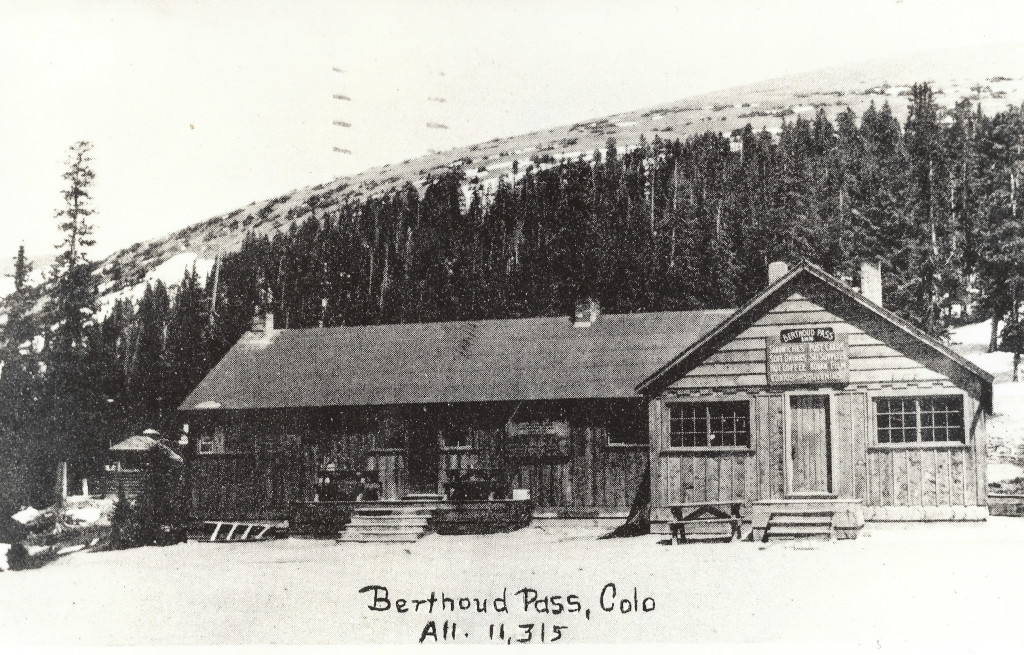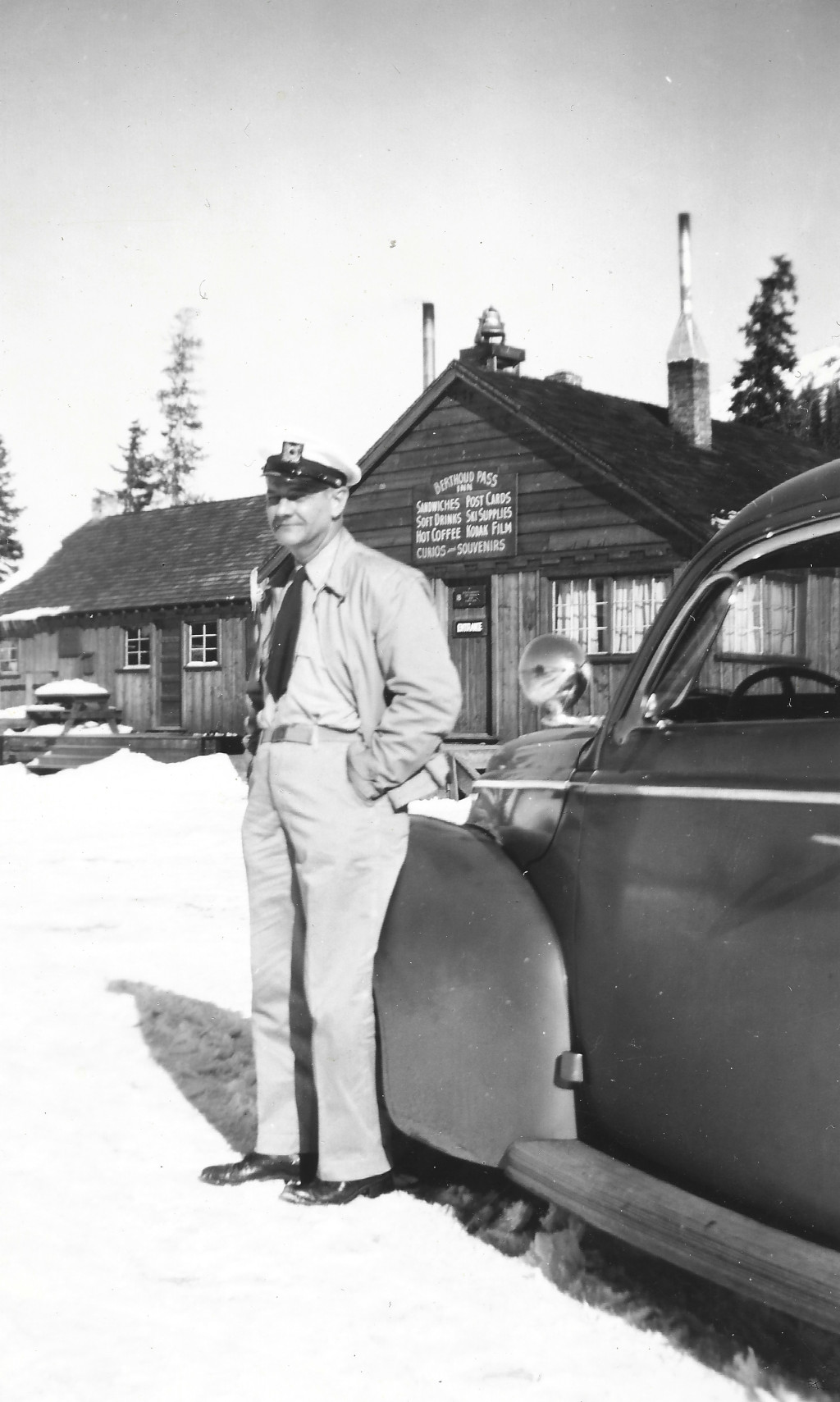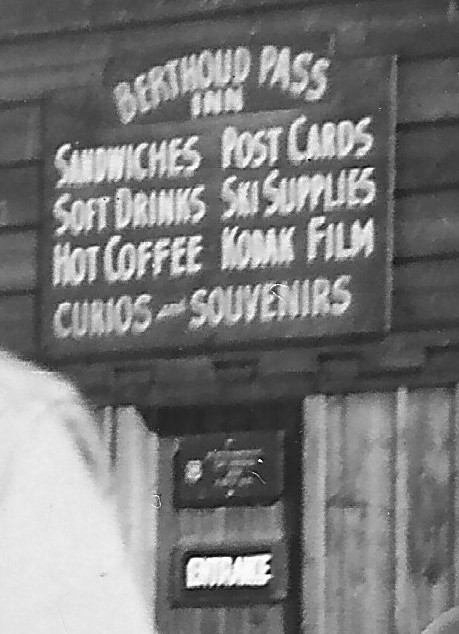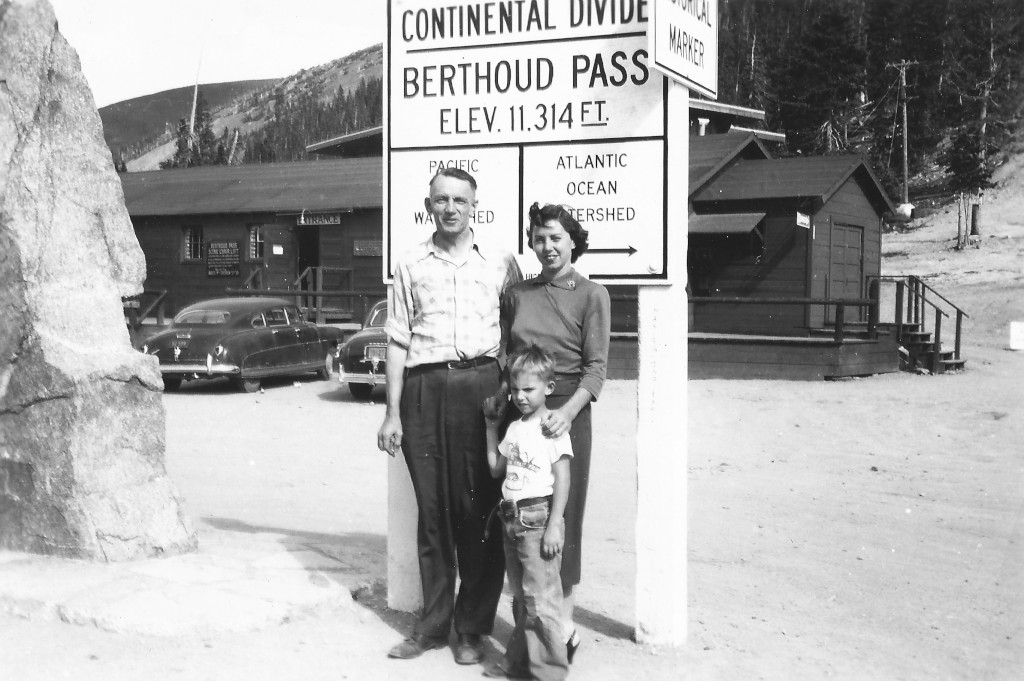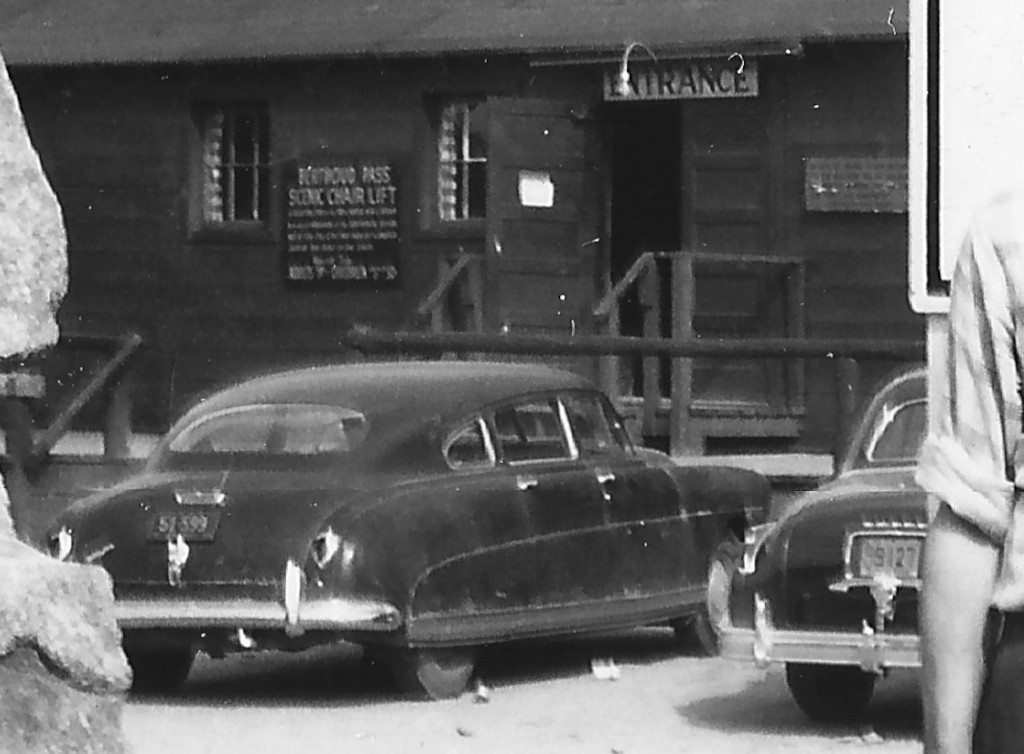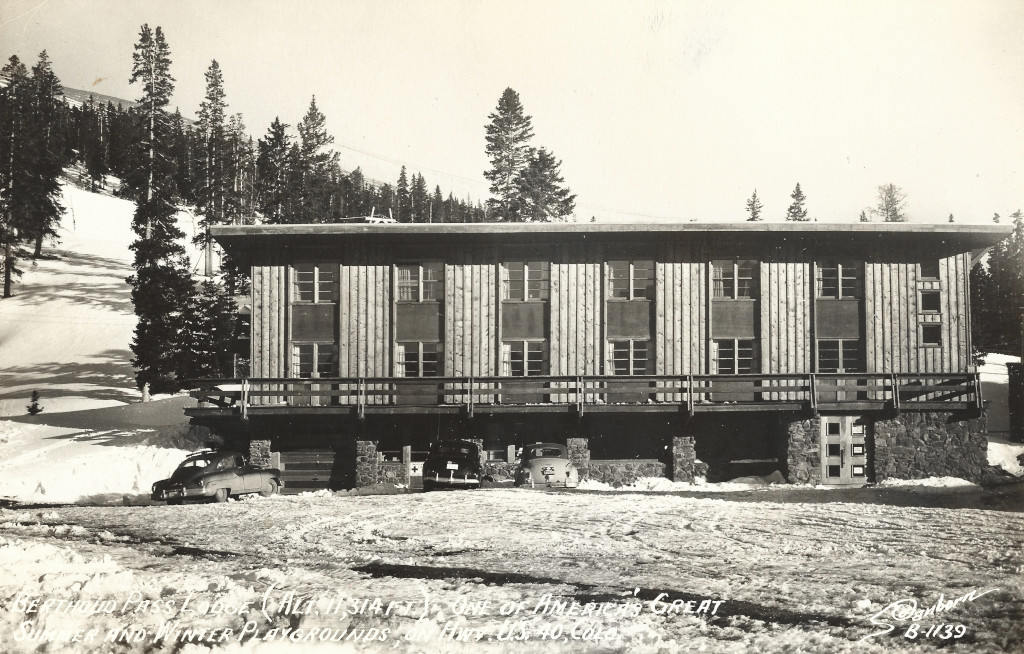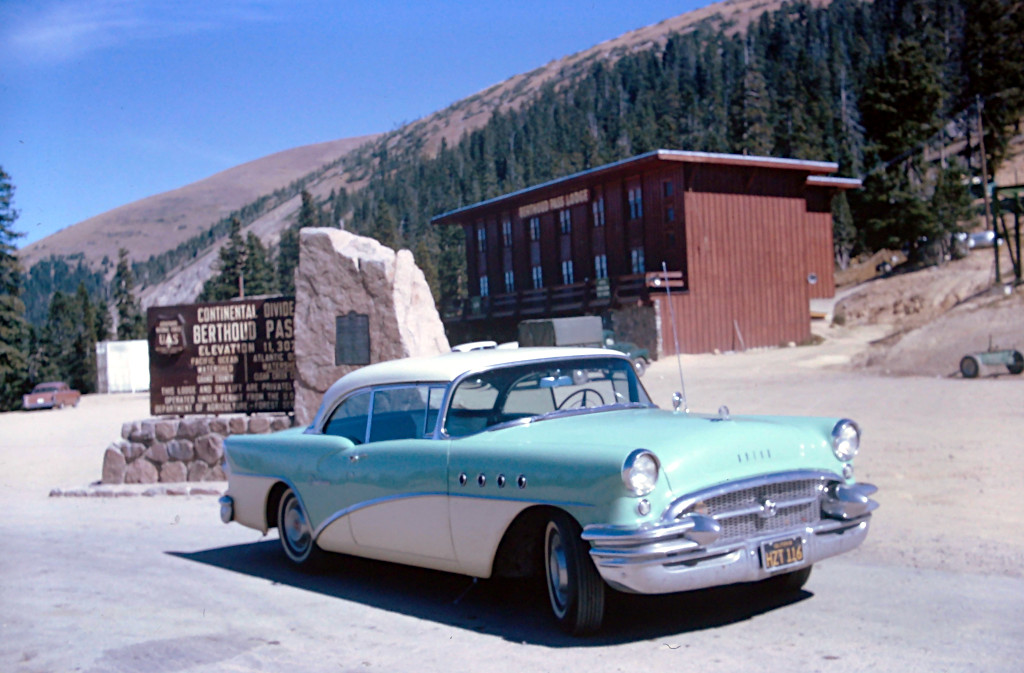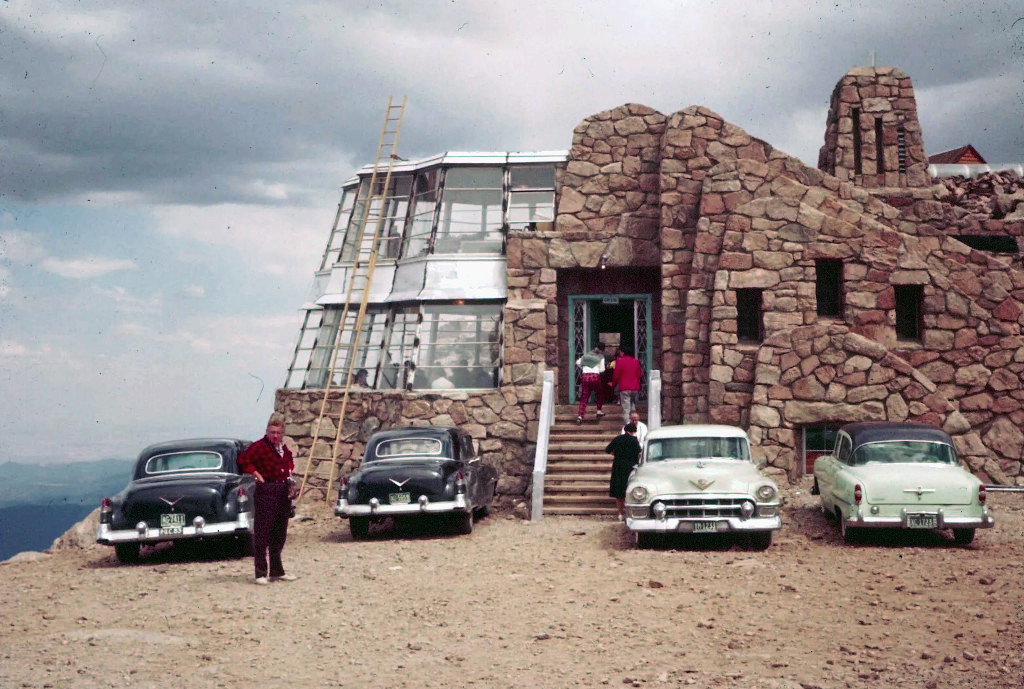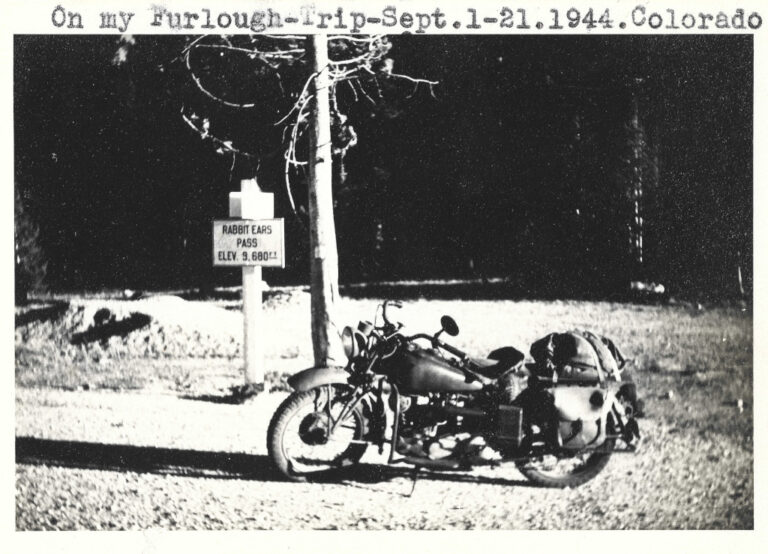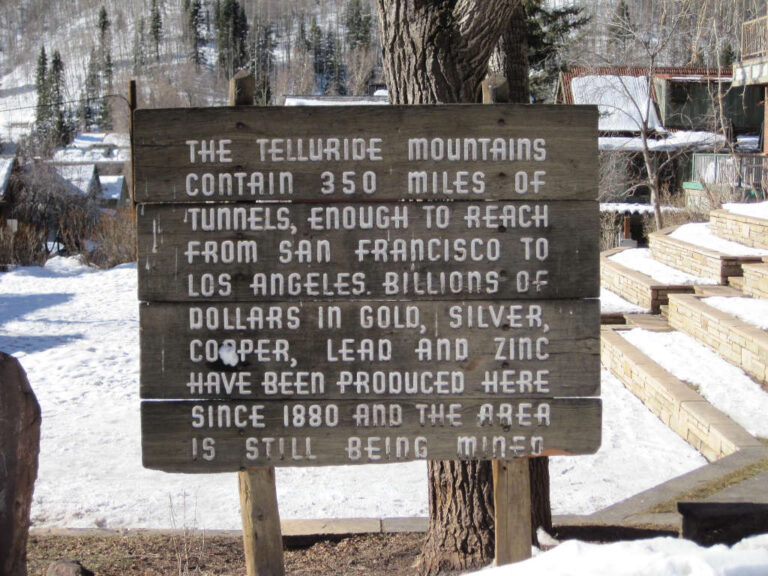History of the Berthoud Pass Inn and Berthoud Pass Lodge
The first building to be built on top of this pass was a cabin built by L.D.C. Gaskill in the 1800s after the toll road was finished. He built a 10-room cabin that he and his family lived in. He took tolls and allowed travelers to stay there, at least when the weather was bad. 1
The toll road was completed just before the winter of 1874, and that cabin was likely built in the spring of 1875. Since then, there have been several versions of the Berthoud Pass Inn. This includes the largest and final version, named the Berthoud Pass Lodge, which was built in 1949, and torn down in 2005.
The Brief History
A brief overview of the Berthoud Pass Inn and Lodge timeline.
- c. 1875 - Large Cabin Is Built
- 1925 - Berthoud Pass Inn Built
- 1938 - Inn Torn Down & Shelter House Built
- 1946 - Shelter Struck by Lightning, Burns Down
- 1947 - Shelter Rebuilt
- 1949 - Berthoud Pass Lodge Built
- 2005 - Berthoud Pass Lodge Torn Down
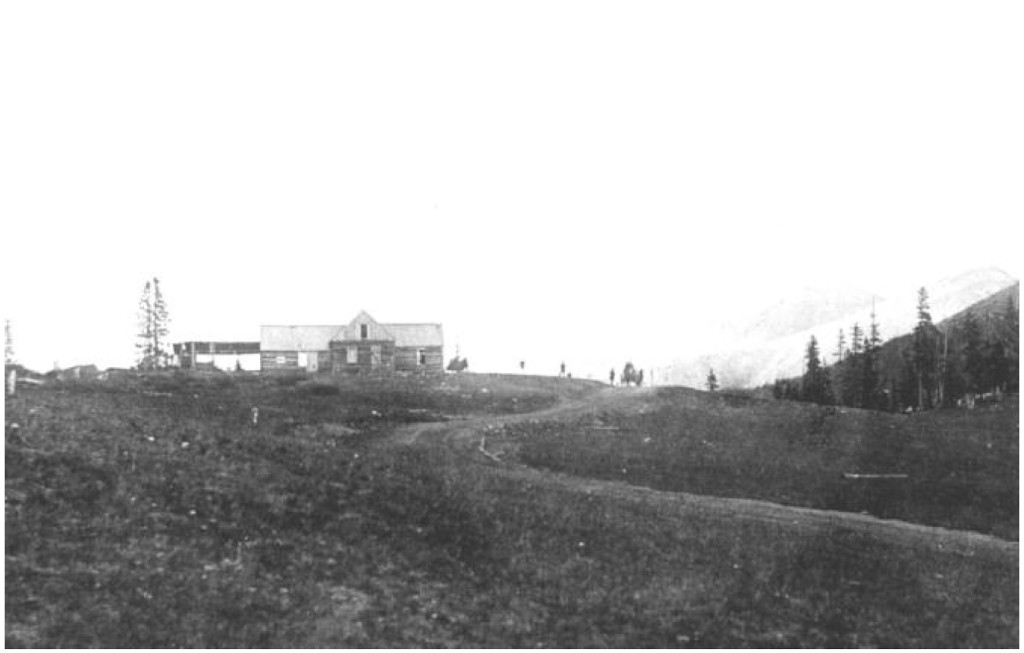
Unless otherwise noted, all images on this page have been scanned from photographs, slides, and
other media in the Coloradotopia Archives Collection.
1925
A permit was given to Charles Fitchett in March of 1925 to establish a camp with several buildings at the top of the pass, in order to provide lodging and food to travelers.2
A lease was given to Fitchett Bros. of Georgetown for a 5 acre parcel of land at the top of the pass in May, and it was reported that the Berthoud Pass Inn was to be built at the top of the Berthoud Pass.3 4
The image below shows the inn under construction during the summer of 1925. This image comes from Daryl Boone, who owns the Glenbrook Gallery in Empire, Colorado.
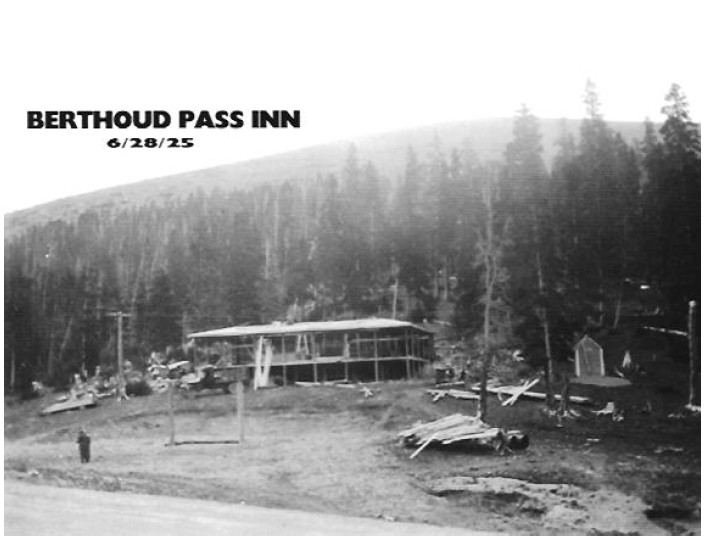
The next image has been developed from a photo negative that is held in the Coloradotopia Archives Collection. The lodge is newly built, and wooden planks from the lodge’s construction can still be seen on the ground to the right side. At this point, those planks were likely being used to built a cabin that would be located in the woods next to the main inn.
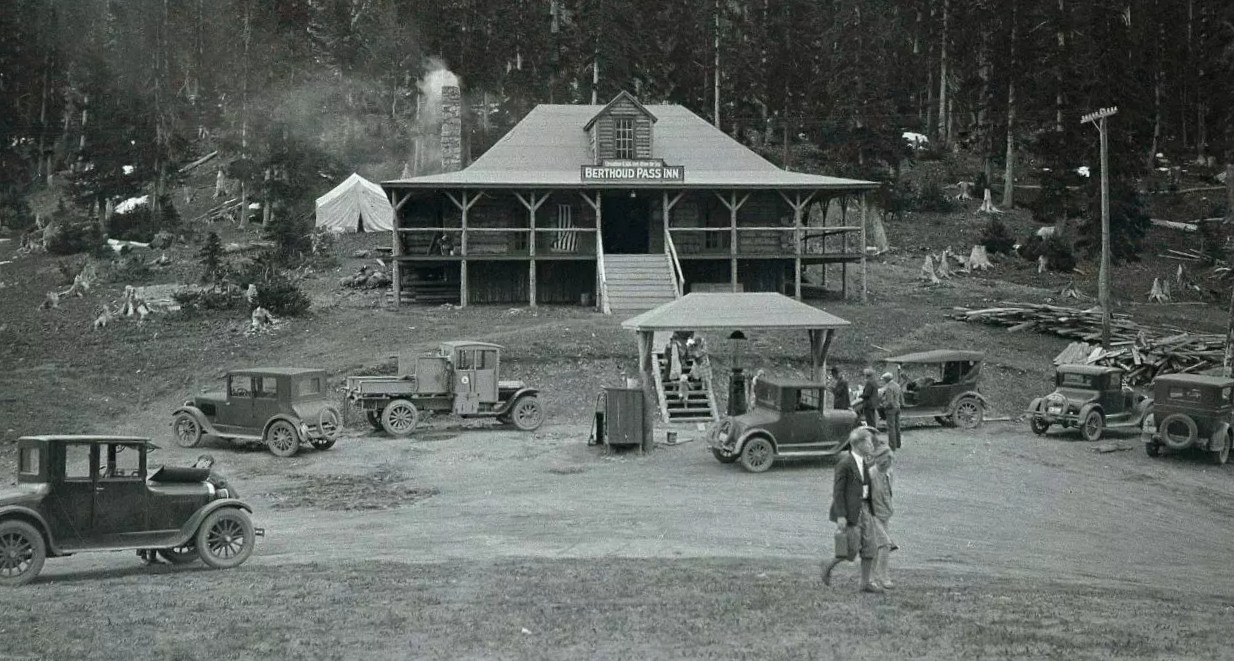
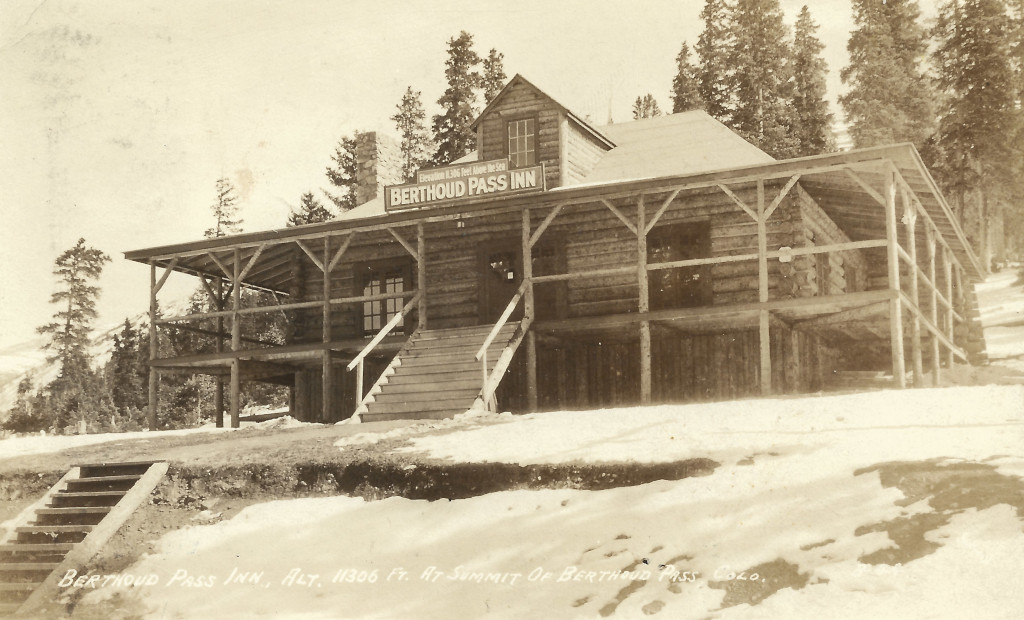
Above & below: Postcards B-54 and B-107 by Harold Sanborn. The dates of these postcards can be estimated based on these numbers. These images were both likely captured between the spring of 1926 and sometime in the following 1-2 years.
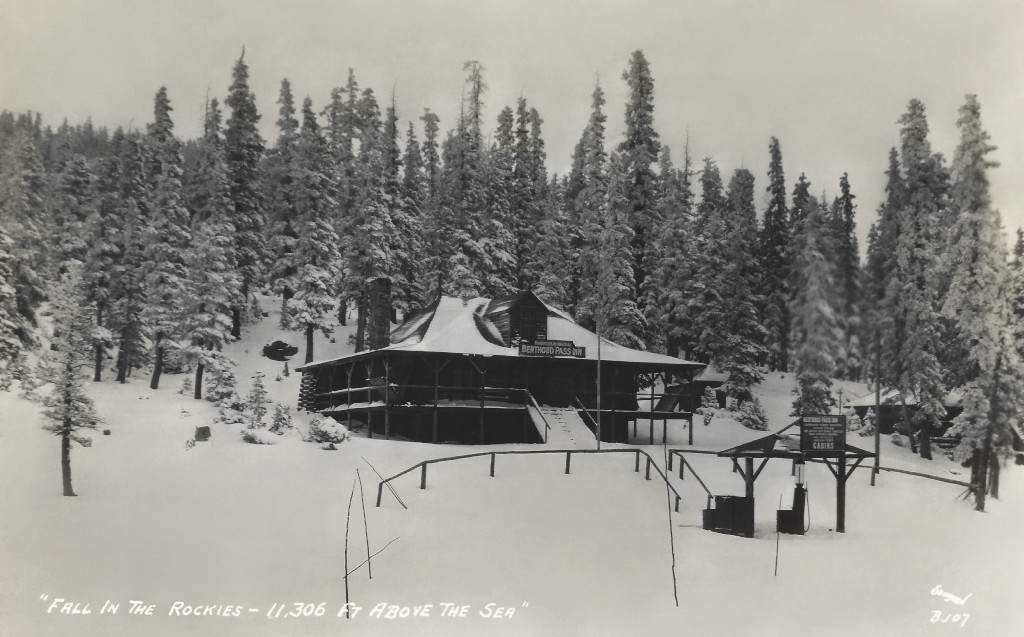
The wooden railing seen above, between the gas pump and the inn, remained there until at least 1929. By the time the next image was captured, that fence was gone, and a new sign had been added above the gas pump.
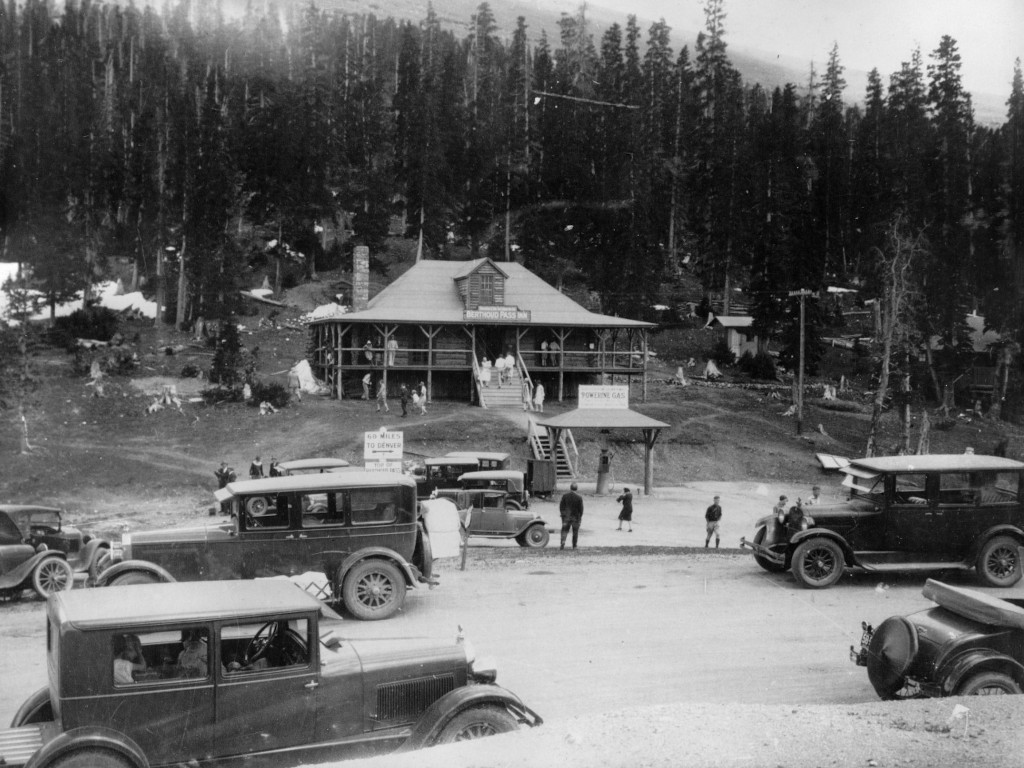
The pass was still being closed during the winters, so the inn would close as well during the early years. The building was still available as a cold weather shelter that could be used during storms if someone was caught on the pass.5
1935
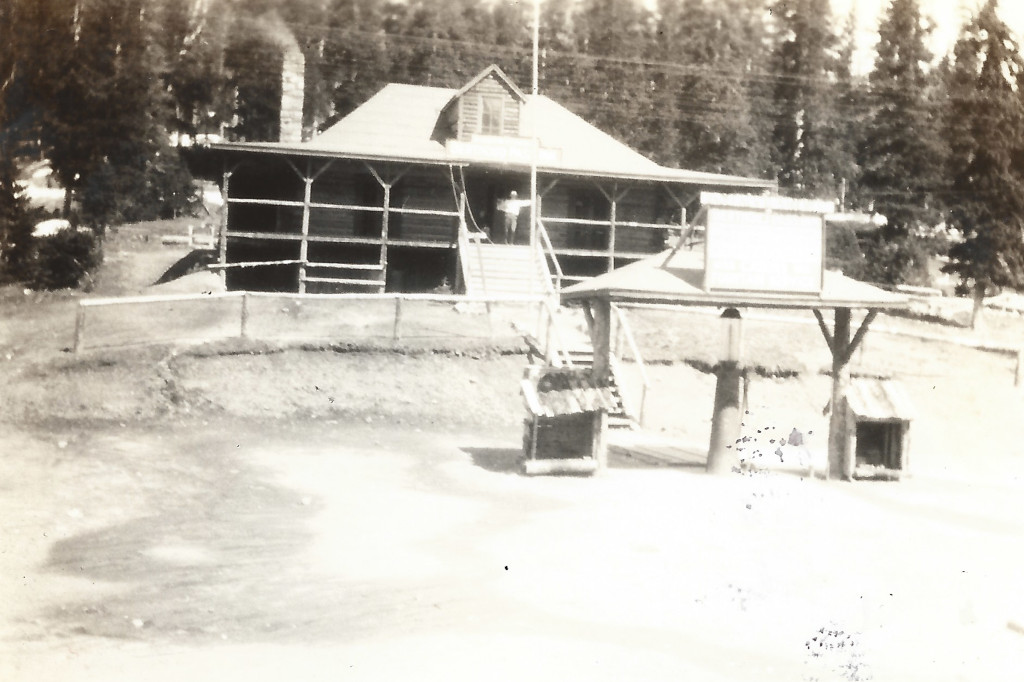
Col. Allen S. Peck, the U.S regional forester, revealed plans in 1935 to turn the summit into a resort area that would include cabins and a ski resort. The 10-year operating permit for the Berthoud Pass Inn was expiring, and it was not yet decided who would pay for the inn’s operation yet as of July, if it was not run privately. It was expected that if a private company did not continue to operate the inn, that the government would do it. 67
1936
Paul Barnes was the owner (or operator) by 1936. He was robbed of $125 by a 15-year old who also kidnapped his son. The kid was later arrested in Kansas City.8
A lodge costing between $75k and $85K is being planned by the forest service. It was expected to have a dining room, coffee shop, accommodations for 30-40 people, a ski waxing room, lower garage, and other facilities. There was no funding yet, but the money was expected to come from the federal government.
BY 1936, the ‘nursery hill’ beginner area was skiable at West Portal, and there were two ski trails cut at the top of the pass. Potential plans are also being discussed for a shelter house at the West Portal, in addition to the main lodge. The forestry service indicated it will push the plans forward if there is significant interest.9
The postcard below shows a cabin that was built in the woods on the southern side of the inn. This image was captured sometime likely in the 1-2 years before 1938. That cabin was built shortly after the main Berthoud Pass Inn structure was completed in 1925.
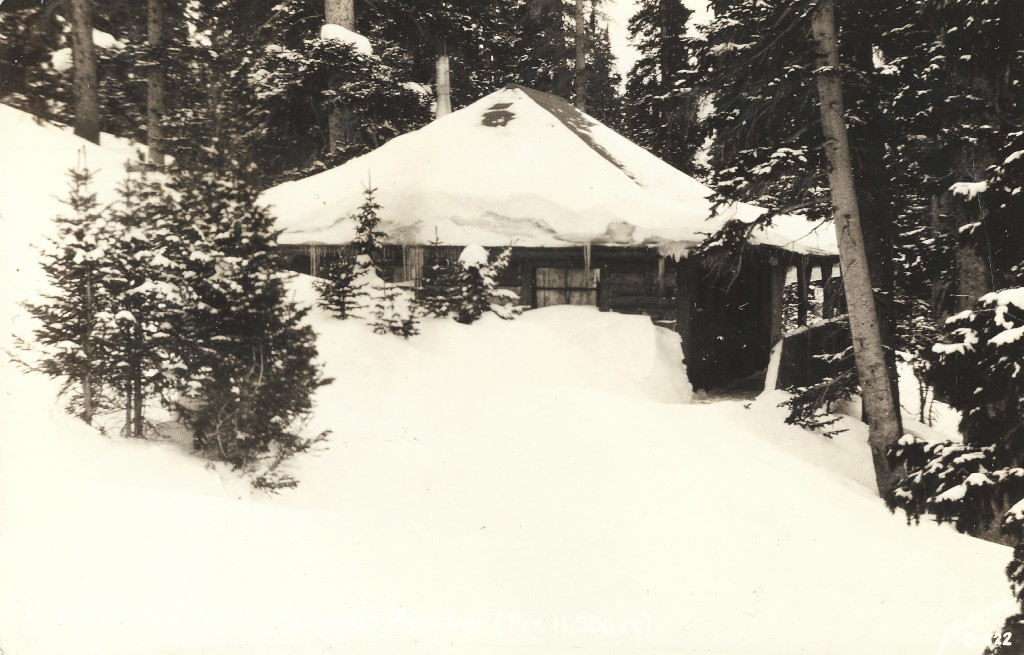
1938 - Inn Torn Down & Shelter House Built
It was reported on Feb 24th, 1938, that the Berthoud Pass Lodge had closed the previous week and would not reopen. The holder of the permit, J.G. Miller, had not yet decided if he would build a new building or move his assets. It was indicated that the restaurant may have needed to be brought up to new regulatory requirements, triggering the end of this era for the inn.10
After closing, the US Forest Service began negotiations with the owners to open up the shelter and restrooms for the rest of the winter, so that they could still be used by skiers.11
The Berthoud Pass Inn would be torn down later in the spring. 12
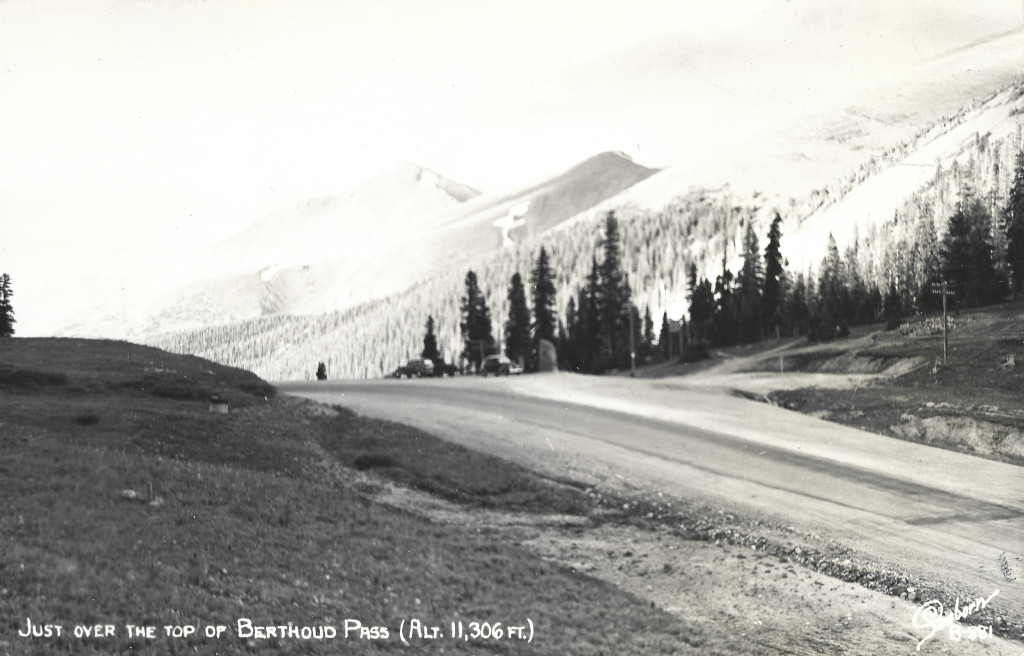
A newer, smaller version of the Berthoud Pass Inn was added at the summit in late 1938. It was built with the intent that it would stay for multiple seasons, but could be torn down, and the materials could be re-used for a larger building.13 It had no accommodations, and was referred to as a shelter house at the time.
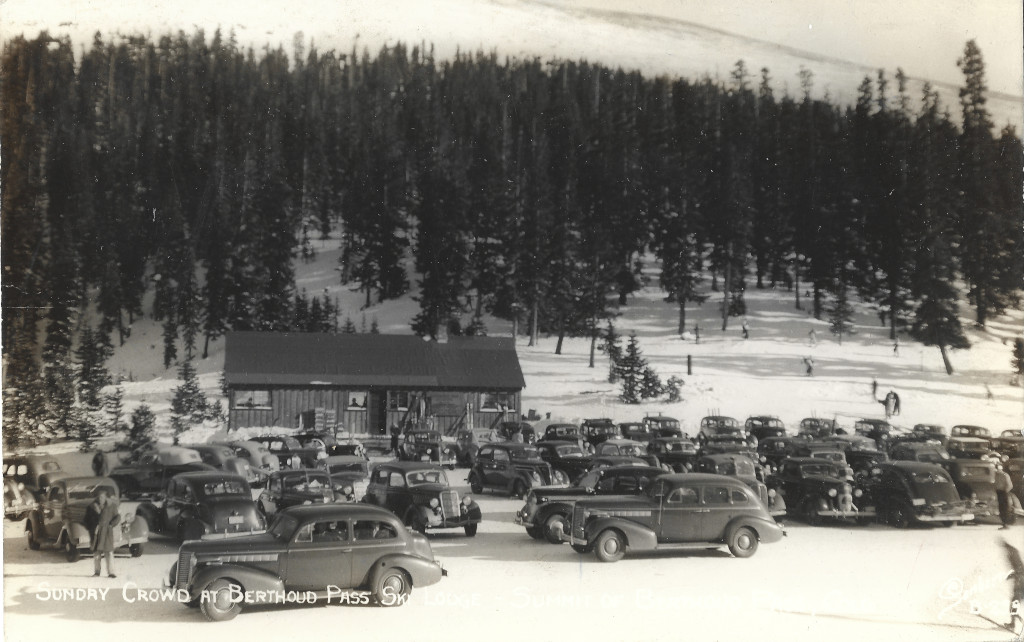
A lone sign on the front of the shelter marks the Continental Divide. Find more discussion of this photograph in the Berthoud Pass Continental Divide sign archive here.
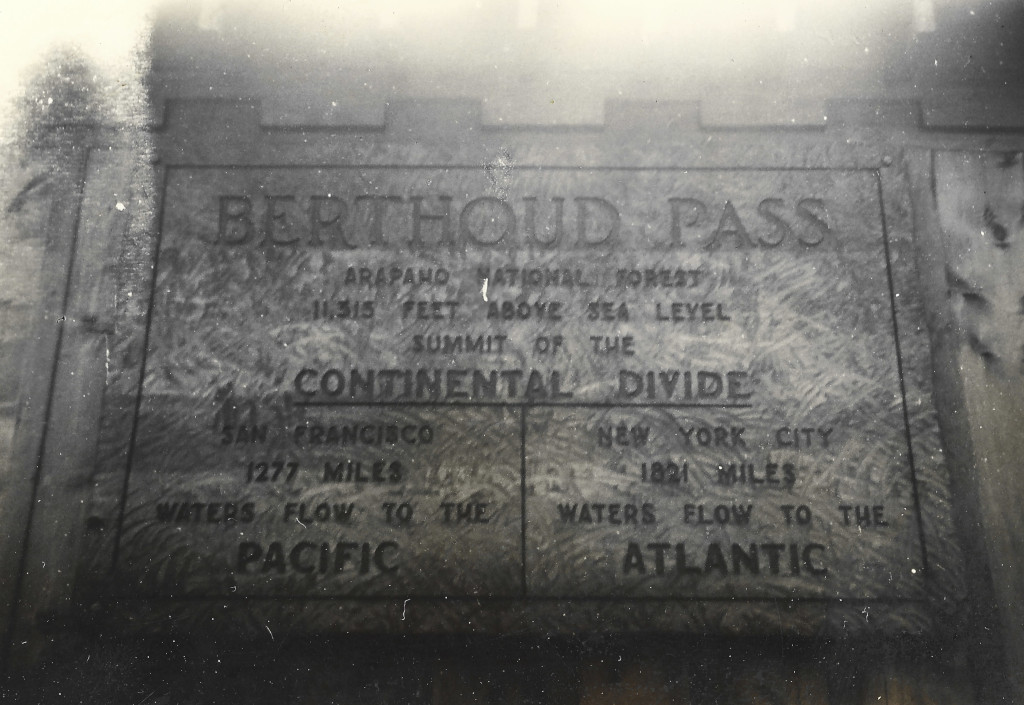
The shelter house can be seen below during the winter of 1938-’39 before the addition is added. A bus and Courtesy Patrol car are also seen sitting in front of the stone marker that was added in 1929.
1939 - Shelter House Addition
The photos above show the inn just after the addition was finished, with a ‘Now Open’ sign hanging below the window. A ‘Berthoud Pass Shelter’ sign can also be seen to the left of the door, and enlarged in one of the images above.
The first sign to take the marquee space above the new addition would still not call this the Berthoud Pass Inn. It would merely read “Open for Business” across the top, and it had a list of things that could be purchased inside. However, within a few years, that sign would be updated, and the shelter house would again be referred to as the Berthoud Pass Inn.
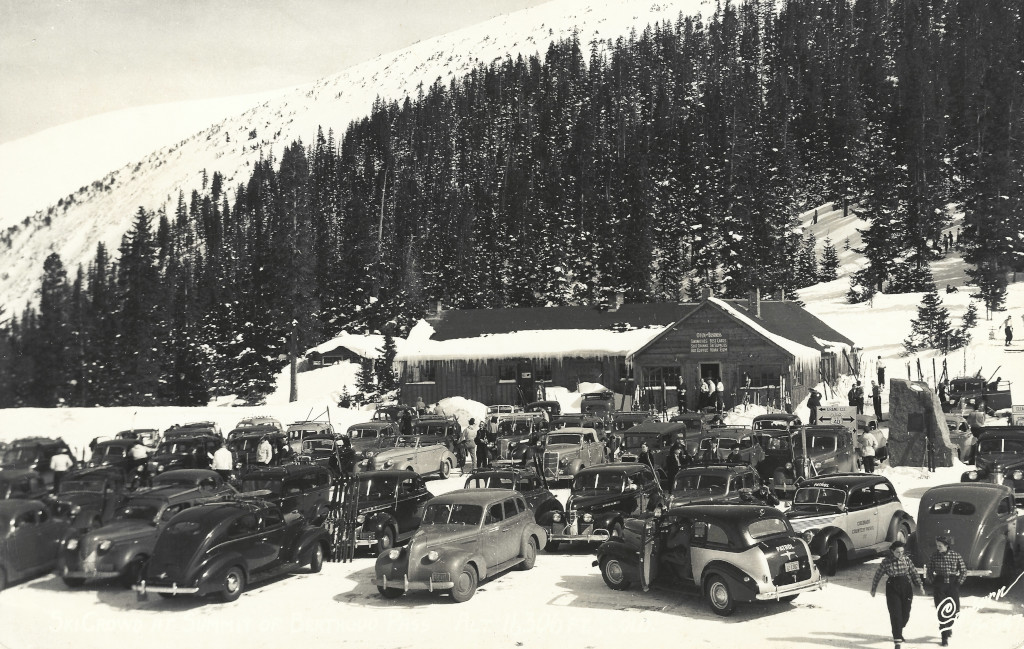
In the next image, a new Berthoud Pass Inn sign adorns the front of the shelter house. Newspapers would refer to it as the shelter house as well as the Berthoud Pass Inn throughout the 1940s. Shelter houses like this were also being built on Wolf Creek Pass and Loveland Pass around this time, and this is just what they were all called.
1946 - Lightning Strikes
The inn is struck by lightning on November 17, 1946, after the skiers had left the mountain for the day. The strike burned down the inn and facility for the rope tow, and also caught a 10-ton tractor on fire.17The shelter house and tow house had been leased to Berthoud Pass Lodge inc. before burning down.18
1947 - A New Shelter House
The shelter house is replaced by the US Forest Service and the CCC. A temporary L-shaped building was added to replace the building that had burnt down in 1946.19 The purpose was likely similar to the previous building, which had no overnight accommodations for travelers. This version of the shelter was also used to sell lift tickets for the chairlift that was built on the other side of the highway in 1947.
The images above are from a 1949 photograph that shows the new shelter, as well as the Berthoud Pass Lodge that was built behind it that year.
1949 - Berthoud Pass Lodge Opens
The Berthoud Pass Lodge was built in 1949 behind the smaller structure that was added in 1947. The smaller building in front of the lodge remained in place until 1954.
Sam Huntington was ski area manager in 1949, and also owned 10% of the Berthoud Pass Lodge Inc. company.20 The lodge was often referred to as his lodge.
There are overnight accommodations available for 40 people in the new lodge by November.21
1950 - Grand Opening
A grand opening luncheon is held for the Berthoud Pass Lodge on January 8th, 1950. It was attended by roughly 100 people.22
1954 - Shelter Torn Down
The shelter house and Berthoud Pass Lodge coexisted peacefully for about 4 years before the shelter house was torn down. The two images below from the Continental Divide sign archives, both captured in 1954, show the summit area before and after the shelter was removed.
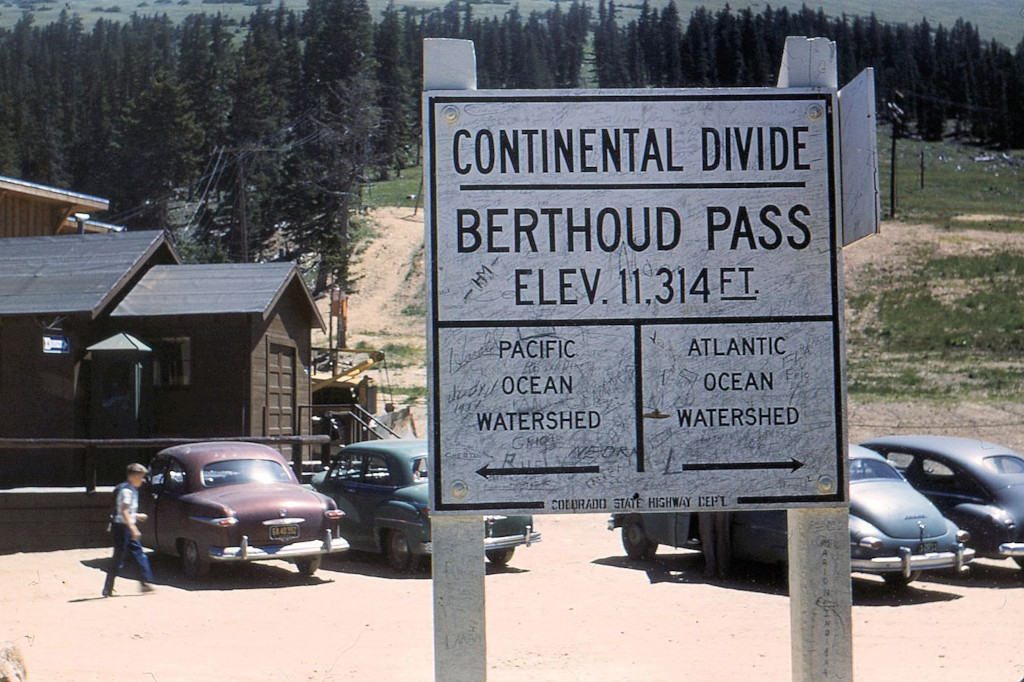
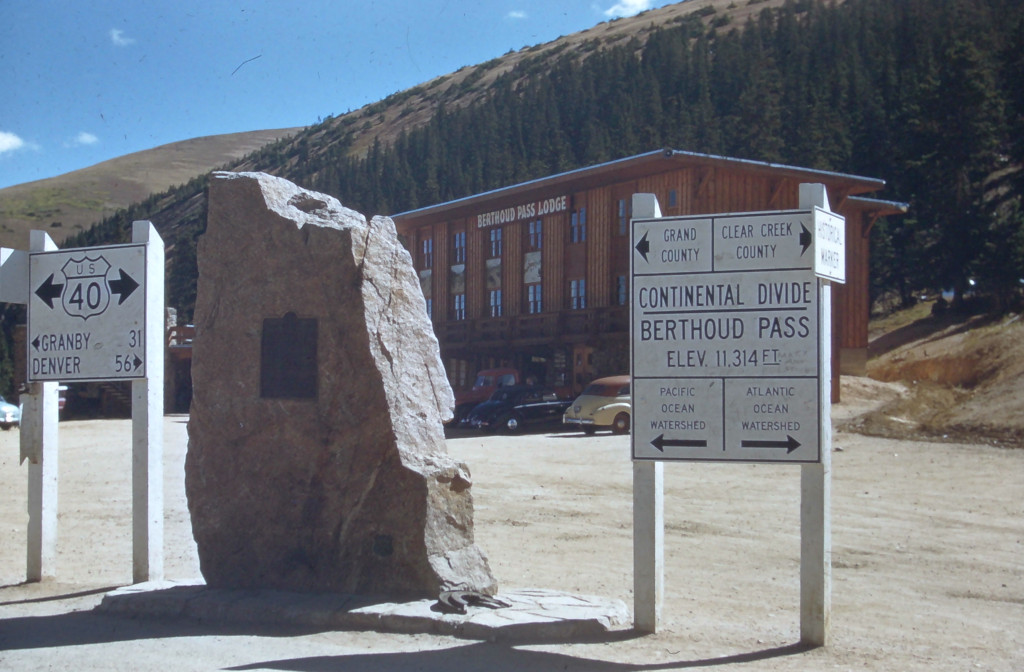
An addition was added onto the lodge shortly after initial construction. This included an observation deck on the northern side. The image below comes from a postcard that was postmarked 1953.
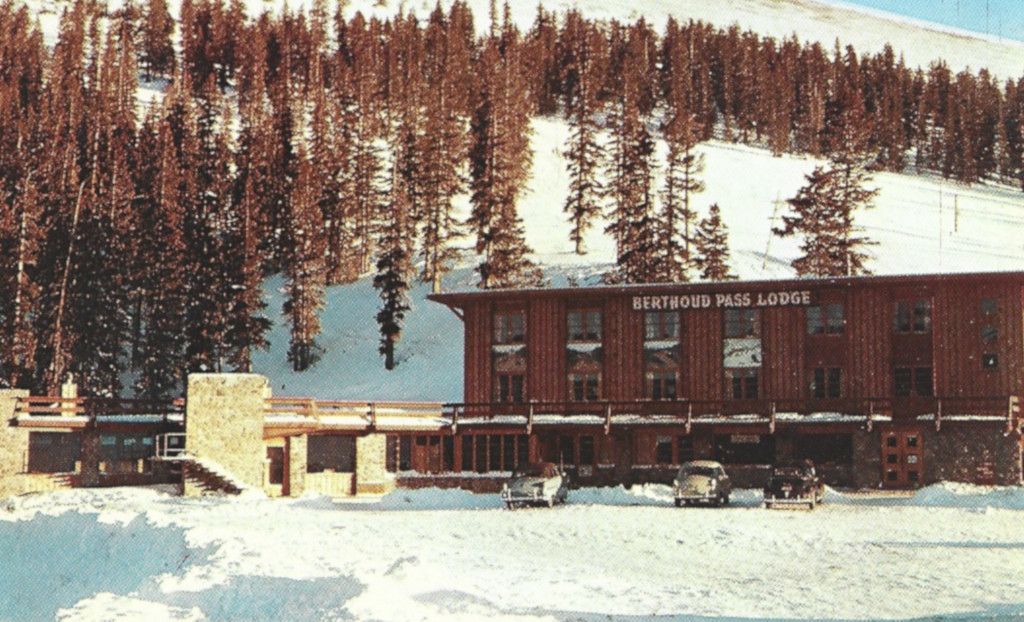
The next pair of images below likely dates to sometime during the 1950s, after the previous photo was captured. A sign reading ‘Coffee Shop – Gift Shop” has been added to one of the stone columns by the observation deck. All of these images originate from slides, photographs, and postcards that are held in the Coloradotopia archives.
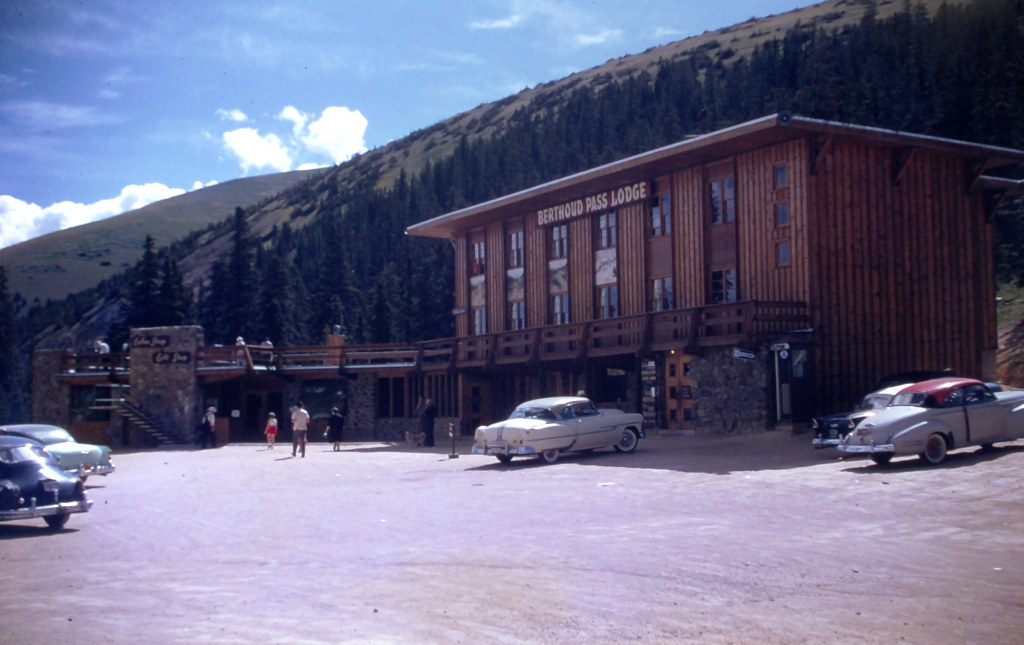
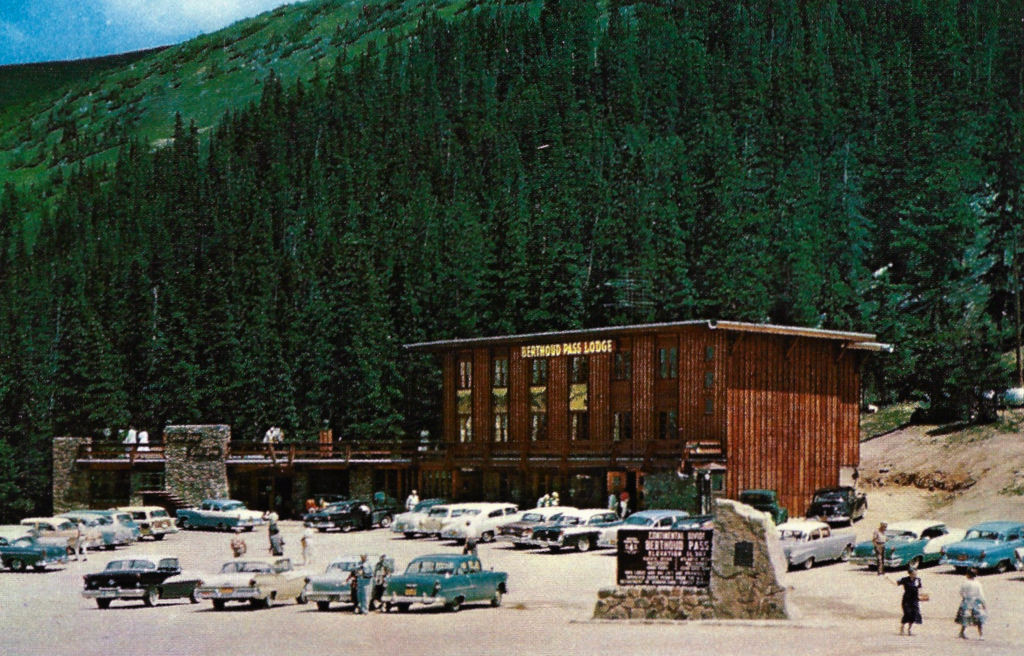
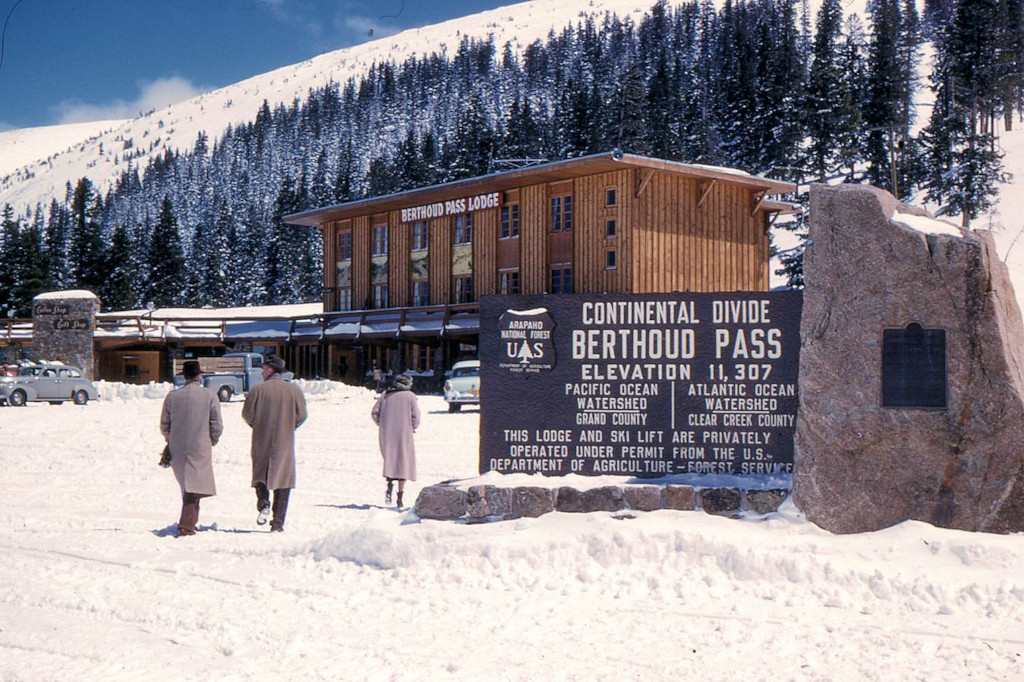
There are more changes in the signage on the lodge by 1964. The ‘Coffee Shop -Gift Shop’ sign is gone, and the new green signs on the front of the lodge have been added.
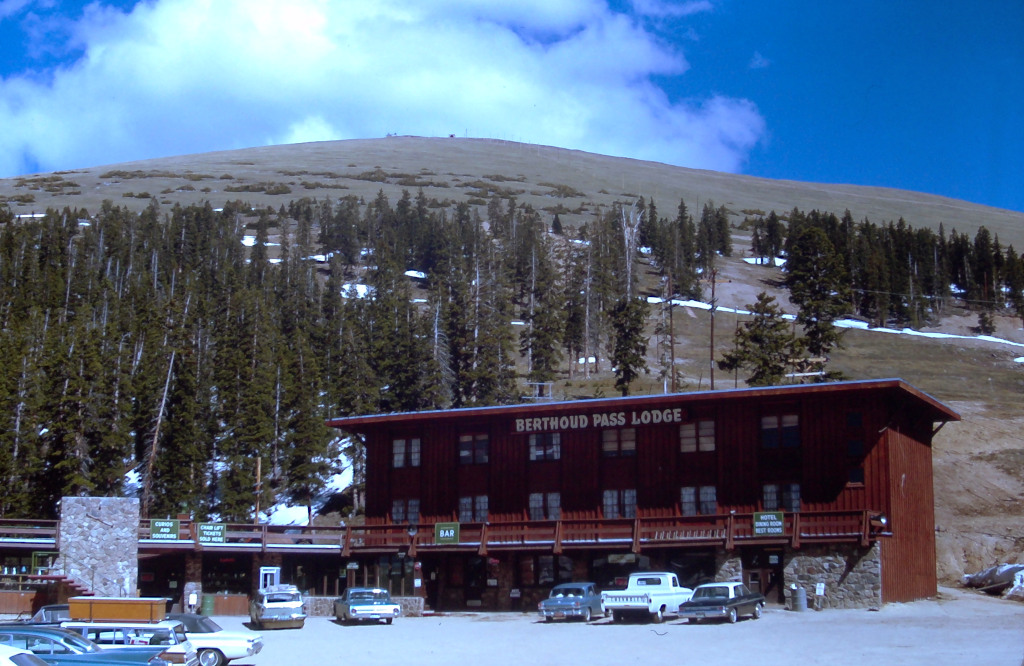
Also Read: The Full In-Depth History of Berthoud Pass
Berthoud Pass Inn/Lodge FAQ
No. The Berthoud Pass Inn was not struck by lightning in 1939. This was an erroneous mistake that was published and repeated.
There is a warming hut on top of Berthoud Pass that was built by the US Forest Service. It has a vault toilet and traveler info, but this is a small, limited, bare structure.
References
All of the historic newspapers and publications below can be found via coloradohistoricnewspapers.org.
All other images scanned from the Coloradotopia Archives.
- Clear Creek County. (n.d.). The history of the buildings at Berthoud Pass. Retrieved from https://www.co.clear-creek.co.us/DocumentCenter/View/2533/The-History-of-the-Buildings-at-Berthoud-Pass?bidId=
- The Steamboat Pilot, March 11, 1925, p. 3.
- The Craig Courier, Volume 34, Number 46, May 7, 1925, p. 1.
- The Salida Record, Volume I, Number 116, May 5, 1925, p. 1.
- Boulder Daily Camera, Volume 35, Number 225, December 8, 1925. p. 10.
- The Steamboat Pilot, July 28, 1938, p. 3.
- The Rocky Mountain News (Daily), Volume 76, Number 182, July 1, 1935, p. 1.
- Longmont Times-Call, Volume XLIV, Number 119, September 19, 1936, p. 1.
- The Rocky Mountain News (Daily), Volume 77, Number 313, November 8, 1936, p. 19.
- The Steamboat Pilot, February 24, 1938, p. 3.
- Longmont Times-Call, Volume XLV, Number 253, February 28, 1938, p. 1.
- The Steamboat Pilot, July 28, 1938, p. 3.
- The Steamboat Pilot, July 28, 1938, p. 3.
- The Steamboat Pilot, June 1, 1939, p. 3.
- The Steamboat Pilot, August 3, 1939, p. 4.
- Craig Empire Courier, Volume 55, Number 31, November 20, 1946, p. 3.
- Craig Empire Courier, Volume 55, Number 31, November 20, 1946, p. 3.
- The Steamboat Pilot, November 21, 1946, p. 1.
- The Rocky Mountain News (Daily), Volume 88, Number 299, October 26, 1947, p. 54.
- The Rocky Mountain News (Daily), Volume 90, Number 356, December 22, 1949,p. 39.
- East High Spotlight, Volume XXXVI, Number 4, November 17, 1949, p. 6.
- The Steamboat Pilot, January 12, 1950, p. 5.

